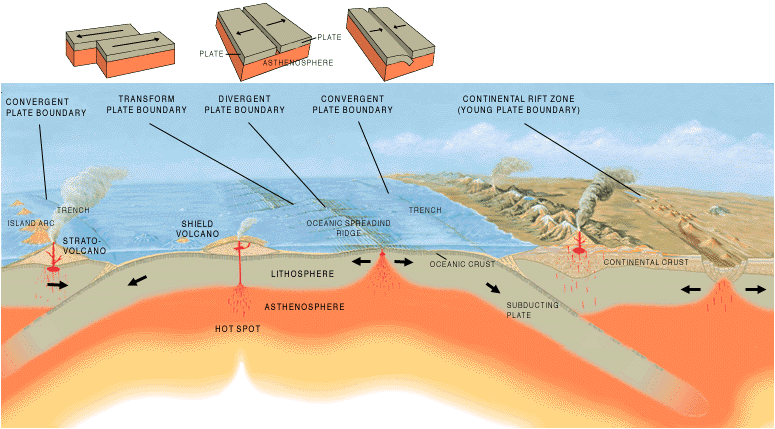③地形:
1)内的営力(地熱エネルギー)
2)外的営力(太陽エネルギー、重力エネルギー)
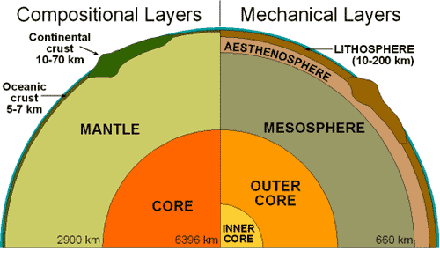 earth structure - The compositional and mechanical layers of the earth. 〔Visionlearning, Inc.によるViosionlearningの中の『Earth Structure』から〕 左半分は化学的区分で、中心から核・マントル・地殻〔海洋/大陸〕と分けられ、右半分は力学的(物理的)区分で、中心から内核・外核・メソスフェア・アセノスフェア・リソスフェアと分けられる。『リソスフェア=プレート』は『地殻』+『マントル最上部』にあたる。 |
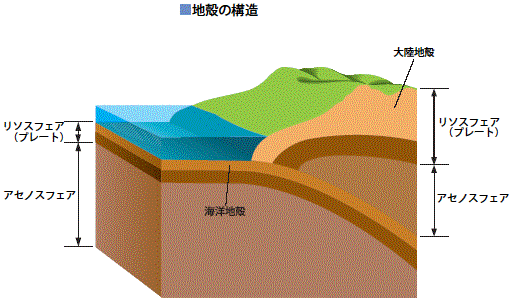 〔文部科学省地震調査研究推進本部の『地震の基礎知識』の中の『地震発生のメカニズムを探る』から〕 |
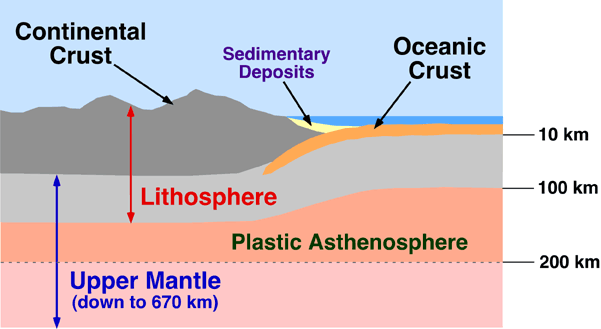 Figure 10h-2: Structure of the Earth's crust and top most layer of the upper mantle. The lithosphere consists of the oceanic crust, continental crust, and uppermost mantle. Beneath the lithosphere is the asthenosphere. This layer, which is also part of the upper mantle, extends to a depth of about 200 kilometers. Sedimentary deposits are commonly found at the boundaries between the continental and oceanic crust. 〔Michael Pidwirny氏によるPhysicalGeography.netの『FUNDAMENTALS OF PHYSICAL GEOGRAPHY』の『CHAPTER 10: Introduction to the Lithosphere』の中の『(h). Structure of the Earth』から〕 硬い『リソスフェア』(地殻+マントル最上部)部分が、軟らかいマントルである『アセノスフェア』の上で水平方向の運動を行うというのが『プレートテクトニクス』モデルである。 |
|
〔USGSのIndex of pubs.usgs.gov/gip/の『Earthquakes』の『Where Earthquakes Occur』から〕 プレートの3つの境界:(1)発散(divergent)、(2)収束(convergent)、(3)トランスフォーム〔断層〕。海洋地殻は海嶺(ridge)で誕生し、海溝(trench)〔沈み込み帯(subduction zone)〕でマントルへ沈み込む。沈み込み帯での火成作用により大陸地殻は誕生する。 |
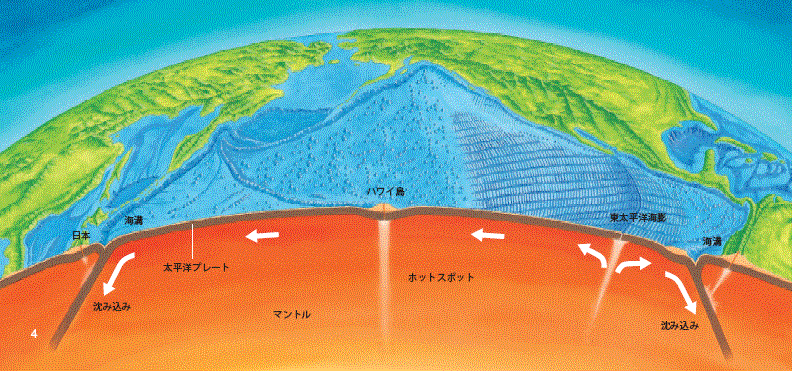 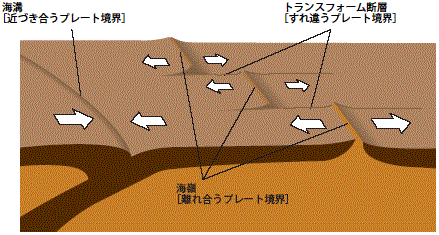 〔文部科学省地震調査研究推進本部の『地震の基礎知識』の中の『地震発生のメカニズムを探る』から〕 3種のプレート境界:(1)発散(離れ合う)、(2)収束(近づき合う)、(3)トランスフォーム(すれ違う)。 |
|
〔W. Jacquelyne Kious and Robert I. TillingによるThis Dynamic Earth: the Story of Plate Tectonicsから〕 主要なプレート。十数枚ある。 |
|
〔John C. Lahr氏によるHow to Build a Model Illustrating Sea-Floor Spreading and Subductionから〕 海底の年齢(放射年代による)。現在は濃い赤色で示され、古い時代は青色で示される。海嶺に近いほど若く、離れるにつれて古くなり、例えば日本列島の南東側では1億5000万年より古い時代の海底が存在する。海嶺で海洋地殻が誕生し、沈み込み帯(海溝)でマントルへ沈み込んで地表から消えていくことを示している。 |
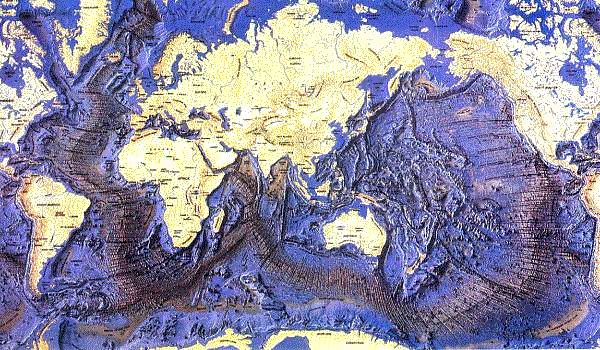 〔Seafriends Marine Conservation and Education Centreによるseafriendsの『oceanography』の中の『Oceanography: Oceans』から〕 海底の地形。海洋地殻が誕生する場である海嶺は、海底活火山脈である。主に太平洋の周囲にある海溝は、海洋地殻がマントルへ沈み込む場である。これらを含むプレート境界部で地震が多発する。 |
 Figure 10m-5: Distribution of earthquakes with a magnitude less than 5 on the Richter Scale. 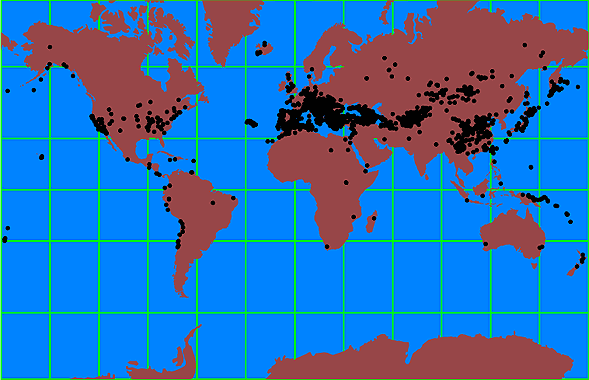 Figure 10m-6: Distribution of earthquakes with a magnitude greater than 7 on the Richter Scale. 〔Okanagan University CollegeのDepartment of GeographyのMichael Pidwirny氏によるPhysicalGeography.netの『FUNDAMENTALS OF PHYSICAL GEOGRAPHY』の『CHAPTER 10: Introduction to the Lithosphere』の中の『(m). Earthquakes』から〕 地震の分布。上は比較的弱く、下は強いもの。 |
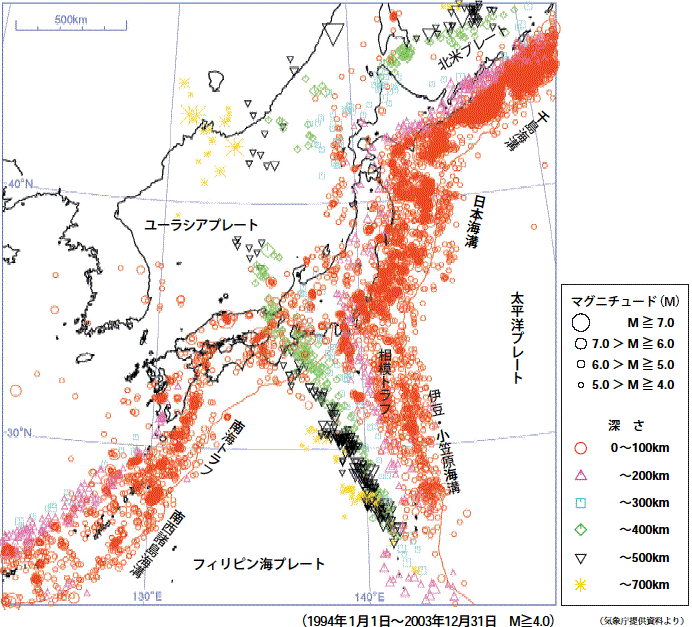 〔文部科学省地震調査研究推進本部の『地震の基礎知識』の中の『地震発生のメカニズムを探る』から〕 海洋プレートの沈み込む面に沿って地震が起こる。 |
